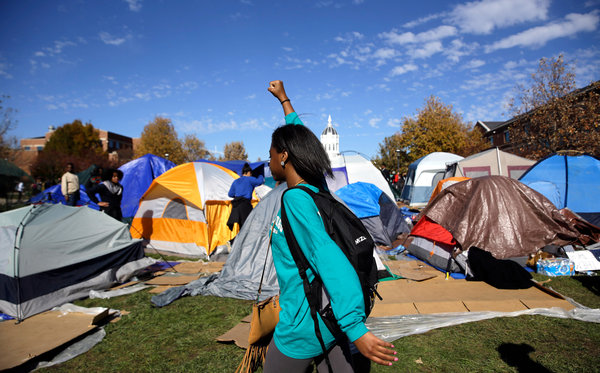Although not the only institution struggling with racial climate on campus, the University of Missouri has become ground zero for the fight to improve the experience of marginalized and underrepresented minority students on campus. Student protests including interrupting the Homecoming parade and a hunger strike by higher education graduate student Jonathan Butler came to a climax when the Mizzou football team announced they would not play or practice until the University of Missouri System President Tim Wolfe resigned. Shortly and perhaps unsurprisingly with athletics taking the protests a more national stage, Wolfe resigned as well as Missouri-Columbia Chancellor R. Bowen Loftin. There are many different opinions on how the administrators, students, media, and faculty involved in the crisis have handled themselves. However, what seems clear to me is the role of unresponsive governance structures in the crisis at the University of Missouri.

The list of demands put forward by Concerned Student 1950 (the student protest group named after the year black students were first admitted to UM) is fundamentally a list of governance demands. The removal of President Wolfe, curricular changes to include racial awareness and inclusion, increase the percentage of black faculty and staff, a new strategic plan, and support for social justice centers on campus are all demands to change the governance and culture of campus.
The marginalization of students and faculty generally in shared governance and black students and faculty in particular only escalates problems with unresponsive governance structures.
As Bruce Joshua Miller and Ned Stuckey-French effectively argue in an essay for the Chronicle of Higher Education, Tim Wolfe held little experience in higher education and focused on business and economic incentives. While it may be a bit of a stretch to connect the attempted closing of the University of Missouri Press with contemporary events as the authors attempt, they do clearly show how President Wolfe’s focus on external constituencies limited his effectiveness to lead and support internal constituencies.
Not alone in this focus (see the hiring of UNC System President Margaret Spellings), Wolfe became a symbol of the university’s leadership focusing on economic and political interests of the state’s elite while minority students within the university faced a hostile environment that marginalized them.
Moreover, once students began coming forward seeking a response from UM’s leaders, the governance system was unable to sufficiently respond. The university’s leaders were more attuned to external concerns and missed the magnitude of the problems and response required.
Simply put, the university’s governance system was hijacked and too focused on securing the university’s economic and political support leaving it unable to deal with festering student and academic concerns.
By failing to build a governance system that included all stakeholders (internal and external), various internal constituencies felt disillusioned and had little control to improve governance. This marginalization along with other aggressions on campus led to crisis and demands that the university’s governance needed immediate and dramatic change.
When stakeholders are excluded from a role in shared governance, the system loses some dynamism and ability to respond. The institution may be able to move along without this for a while and even appear successful. However, when a crisis emerges, the system doesn’t have the built in capital and capacity to effectively respond.
I am an unabashed supporter of traditional academic governance. I believe shared governance is messy, inefficient, and challenging, yet leads to qualitatively better institutional decisions.
I worry that efforts to thwart, bypass, and ignore shared governance, even in an attempt to proactively respond to the myriad pressures facing senior institutional leaders, hurts higher education.
The process and dynamics of academic governance can help colleges and universities build consensus, engage in dialogue, and ultimately come to more nuanced and thoughtful decisions.
I can’t help but think how about the role of unresponsive governance structures in the crisis at the University of Missouri not only continued the racial climate on campus, but restricted the institution’s ability to effectively respond to the crisis once escalated.
Maybe academic governance isn’t as ineffective and inefficient as opponents suggest after all.

